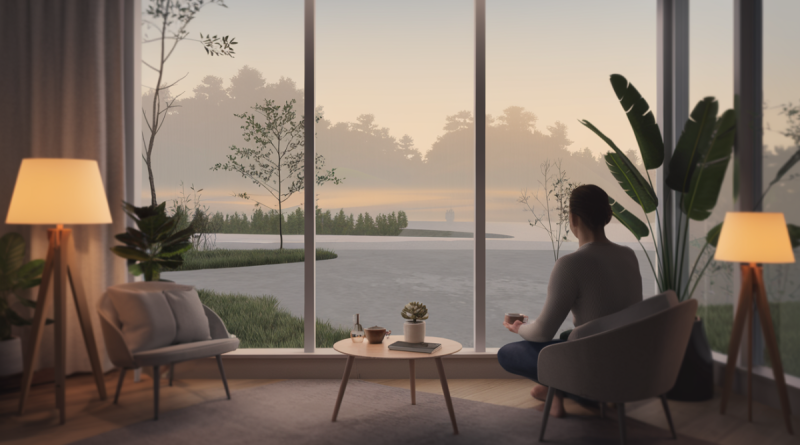Learn to Sit Back and Observe. Not Everything Need – Tymoff
Introduction
In today’s fast-paced world, it’s easy to feel pressured to react to everything instantly. Social media notifications, work deadlines, and life’s uncertainties all seem to demand immediate responses. But, as the quote “Learn to sit back and observe. Not everything need – Tymoff” suggests, some situations benefit more from patience and reflection than immediate action. This approach not only conserves emotional energy but also enhances decision-making, relationships, and mental well-being. Embracing the power of observation allows us to engage with life thoughtfully and wisely, reducing unnecessary stress and fostering inner peace.
“Learn to sit back and observe. Not everything need – Tymoff” encourages mindfulness and patience, empowering individuals to respond thoughtfully rather than react impulsively to life’s challenges.
The Meaning of “Learn to Sit Back and Observe”
Sitting back and observing means taking a step back from immediate reactions. It involves looking at situations objectively, without feeling compelled to respond right away. This approach is crucial because our first reactions often come from emotional places, which may not always reflect our best judgment.
Observing from a distance enables us to:
- Understand situations more deeply before responding.
- Identify hidden motives or underlying emotions in ourselves and others.
- Give ourselves the gift of time to process and make more thoughtful choices.
By consciously observing rather than reacting, we strengthen our ability to choose our responses wisely, ensuring they align with our values and goals.
Emotional Intelligence: Why Not Everything Needs a Reaction
A key element of sitting back and observing is emotional intelligence, which involves recognizing and managing our emotions. High emotional intelligence allows us to distinguish between situations that require immediate responses and those that benefit from patience. Learning not to react to everything helps us:
- Maintain composure during stressful or provocative events.
- Build resilience against negativity and pressure.
- Focus our energy on what truly matters rather than getting drawn into unnecessary conflicts or distractions.
Mindfulness as a Tool for Better Observation
Mindfulness is a powerful tool that supports the practice of observation. By training the mind to stay present, we can observe situations without judgment or attachment. This neutral mindset makes it easier to:
- Notice subtleties and details we might otherwise miss.
- Gain insights that might not be apparent at first glance.
- Pause and reflect, allowing time to choose our responses.
Tips to Cultivate Mindfulness:
- Practice daily meditation to sharpen your attention and calm the mind.
- Engage in mindful breathing exercises during stressful situations.
- Use grounding techniques, like noticing five things around you, to stay present.
Practical Benefits of Learning to Observe
The ability to observe without reacting immediately has a profound effect on multiple areas of life:
- In Relationships: Observation helps us understand our loved ones’ behaviors and needs better, reducing misunderstandings.
- In the Workplace: Sitting back and observing can provide clarity in high-stress situations, leading to wiser decision-making.
- Personal Growth: Taking time to observe our own reactions and emotions fosters self-awareness, helping us recognize areas for personal development.
Strategies to Practice “Sit Back and Observe” in Daily Life
Practicing patience and observation takes time, but small, consistent efforts can make a big difference. Here are some effective strategies:
- Set a Daily Intent to Observe: Start each day by reminding yourself to observe rather than react. Make a conscious effort to pause in challenging moments.
- Reflect with Journaling: Take a few minutes each day to write down any observations about your day, focusing on times when you held back from reacting.
- Engage in Slow Activities: Activities like walking, painting, or cooking allow you to practice observation and mindfulness simultaneously.
Overcoming the Impulse to React
Reacting impulsively is natural, especially when emotions run high. However, becoming aware of our triggers can help us manage these impulses. Techniques to overcome reactivity include:
- Identify Your Triggers: Recognize situations or people that often make you react impulsively.
- Practice Deep Breathing: When you feel the urge to react, take a few deep breaths to calm your mind.
- Ask Yourself if It’s Worth It: Pause and question if reacting will improve the situation. Often, the answer is no, which makes it easier to sit back and observe.
The Positive Impact of Practicing Patience and Observation
Consistently practicing patience and observation has lasting benefits:
- Enhanced Mental Well-being: By reducing the need to react, we experience less stress and anxiety.
- Stronger Relationships: Thoughtful responses strengthen communication and trust with others.
- Improved Decision-making: Taking time to observe allows us to make choices rooted in logic and insight rather than emotion.
Learning to sit back and observe truly transforms the way we experience and interact with the world, leading to a more fulfilling and balanced life.
FAQs
1. How does observation improve decision-making?
Observation allows us to gather information, understand context, and think critically before making choices, leading to better-informed and less impulsive decisions.
2. How can one prevent overthinking while observing?
Focusing on mindful observation without judgment can reduce overthinking. Notice what’s happening but avoid dwelling on hypothetical outcomes or past experiences.
3. What are some practical examples of sitting back and observing in the workplace?
In meetings, observing allows you to better understand others’ perspectives before speaking. During conflicts, taking a moment to observe before responding can lead to constructive solutions.
